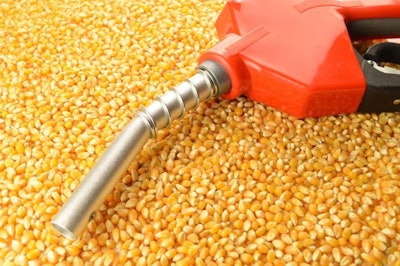
The U.S. Environmental Protection Agency issued a final rule under the Renewable Fuel Standard (RFS) program that establishes the biofuel volume requirements for 2023 to 2025.
The set rule establishes the biofuel volume requirements and associated percentage standards for cellulosic biofuel, biomass-based diesel (BBD), advanced biofuel, and total renewable fuel for 2023–2025. It also completes EPA’s response to a court remand of the 2016 annual rule by establishing a supplemental volume requirement of 250 million gallons of renewable fuel for 2023.
The final volume targets for BBD are as follows:
- 2023 volume target remains at 2.82 billion gallons
- 2024 rises to 3.04 billion gallons
- 2025 is 3.35 billion gallons
The American Soybean Association (ASA) released a statement expressing disappointment with the rule, saying it does not accurately reflect the growth expected in the industry and falls far below the industry’s current production.
ASA president Daryl Cates said the announcement is a letdown for soy growers and producers.
“Farmers and biomass-based diesel producers face real, concerning consequences from low RFS volumes that do not reflect current production and demand, and we’re disappointed in this lack of support for the industry."
The Clean Fuels Alliance America also expressed disappointment in the EPA standards, saying the agency failed to change BBD volumes for 2023 despite the rapid increase in U.S. production of biodiesel, renewable diesel and sustainable aviation fuel during the first months of the year.
“U.S. clean fuel producers, oilseed processors, fuel distributors and marketers have all made significant investments to grow the industry rapidly over the next several years," said Kurt Kovarik, vice president of federal affairs with Clean Fuels. "The industry responded to signals from the Biden administration and Congress aiming to rapidly decarbonize U.S. fuel markets, particularly aviation, marine, and heavy-duty transport, and make clean fuels available to more consumers. The volumes EPA finalized today are not high enough to support those goals.”
In December, EPA issued a multi-part three-year proposal to expand the U.S. biofuels policy with bigger volume mandates creating hope standards would be increased.
Growth of biomass-based diesel continues
The Energy Information Administration predicts an increase in BBD production of over 800 million gallons in 2023. The final EPA rule offers RFS volume increases of 590 million gallons over the course of three years.
"The 2025 target represents a mere 20% growth over the EPA’s 2022 target," ASA said. "It matches current production levels, failing to account for any growth in the industry."
ASA said billions of dollars are being invested in biodiesel, renewable diesel, soybean crushing plants and other infrastructure to be able to produce more BBD.
The expanded crush capacity companies have announced for the next three years would increase soybean oil supplies by about 5.5 billion pounds, noted ASA.
"This translates into about 700 million gallons of renewable diesel, far above EPA’s three-year RVO growth of only about 590 million gallons," ASA's statement said. "Adding growth from other feedstocks to the announced crush expansion creates a feedstock-abundant situation."
Cates said the market may not be able to absorb the expected future production.
"EPA’s final rule undercuts these investments," said Cates. "“It’s also a huge, missed opportunity for a low-carbon fuel to reduce greenhouse gas emissions and scale back the country’s reliance on imported oil."
Rule misses the mark for ethanol too
For 2023, EPA set an implied 15.25-billion-gallon requirement for conventional ethanol, which includes a supplemental 250 million gallons a prior court decision required EPA to restore to the RFS. For 2024 and 2025, EPA holds the implied conventional volume level at 15 billion gallons, despite proposing 15.25 billion gallons for those two years.
The RFS requires annual volumes of renewable fuels, such as ethanol, be used in the fuel supply to reduce emissions, expand and diversify the supply, improve energy security and lower costs.
The 2023-2025 volume is EPA’s first RFS rule based on qualitative environmental, economic and agricultural factors listed in the statute, rather than specific volumes in law. The new process allows EPA greater latitude, which the agency used to build on the strong baseline of the 2022 RFS volumes.
“Today’s final RFS volumes came in below levels EPA proposed for conventional biofuels for 2024 and 2025, holding ethanol volumes steady at 15 billion gallons,” said National Corn Growers Association (NCGA) president Tom Haag. “A multi-year RFS volume rule offers stability and certainty for renewable fuels. However, when it comes to addressing pressing energy, environmental and economic challenges, EPA’s final rule falls short of the emission reductions and cost-saving benefits the higher proposed ethanol volumes would have provided.”
Separate from the volumes, Haag noted corn growers appreciate that EPA did not finalize a proposal to create a new program to generate RFS credits from automakers for electricity from renewable biomass, referred to as e-RINS.
















